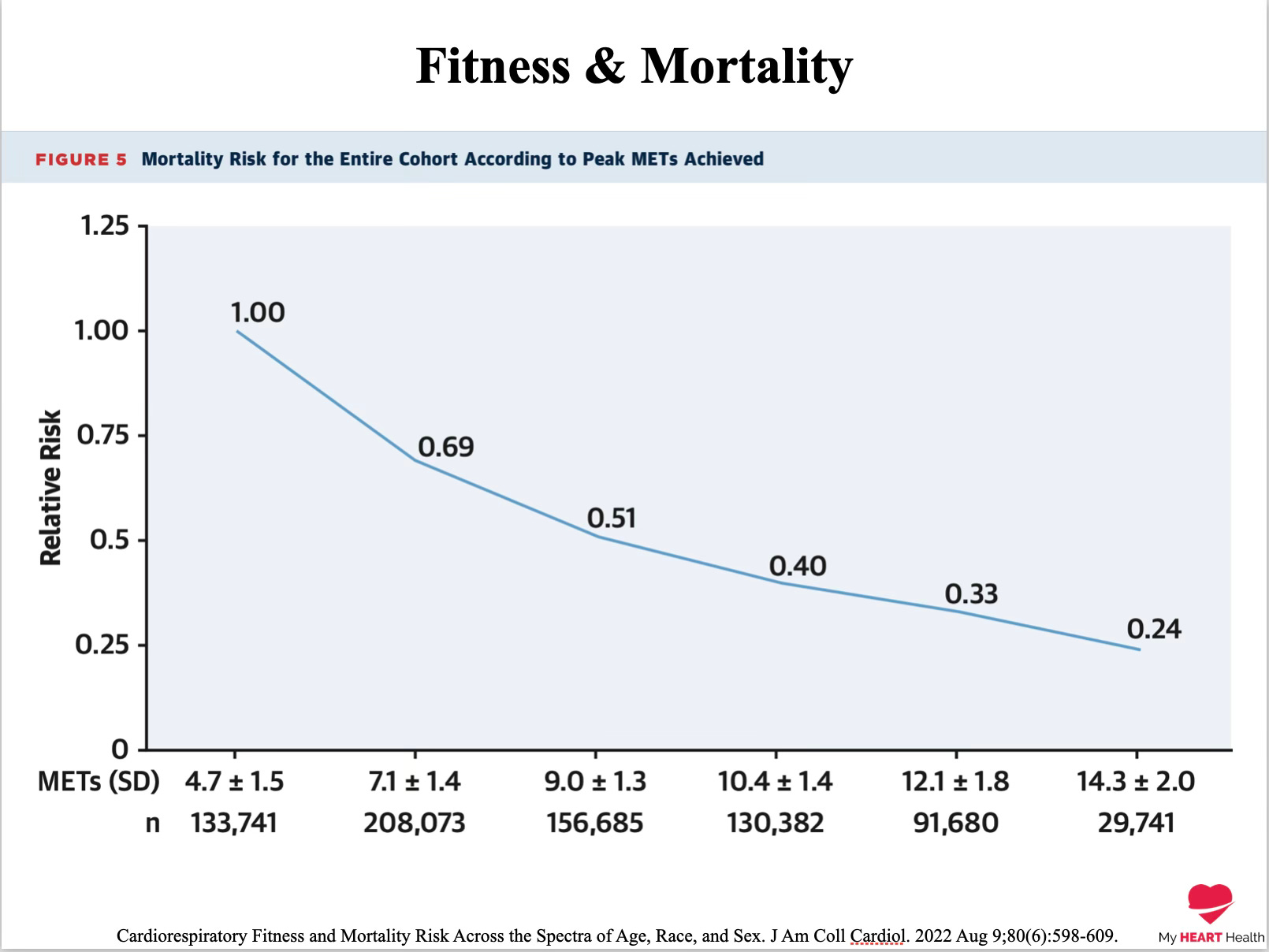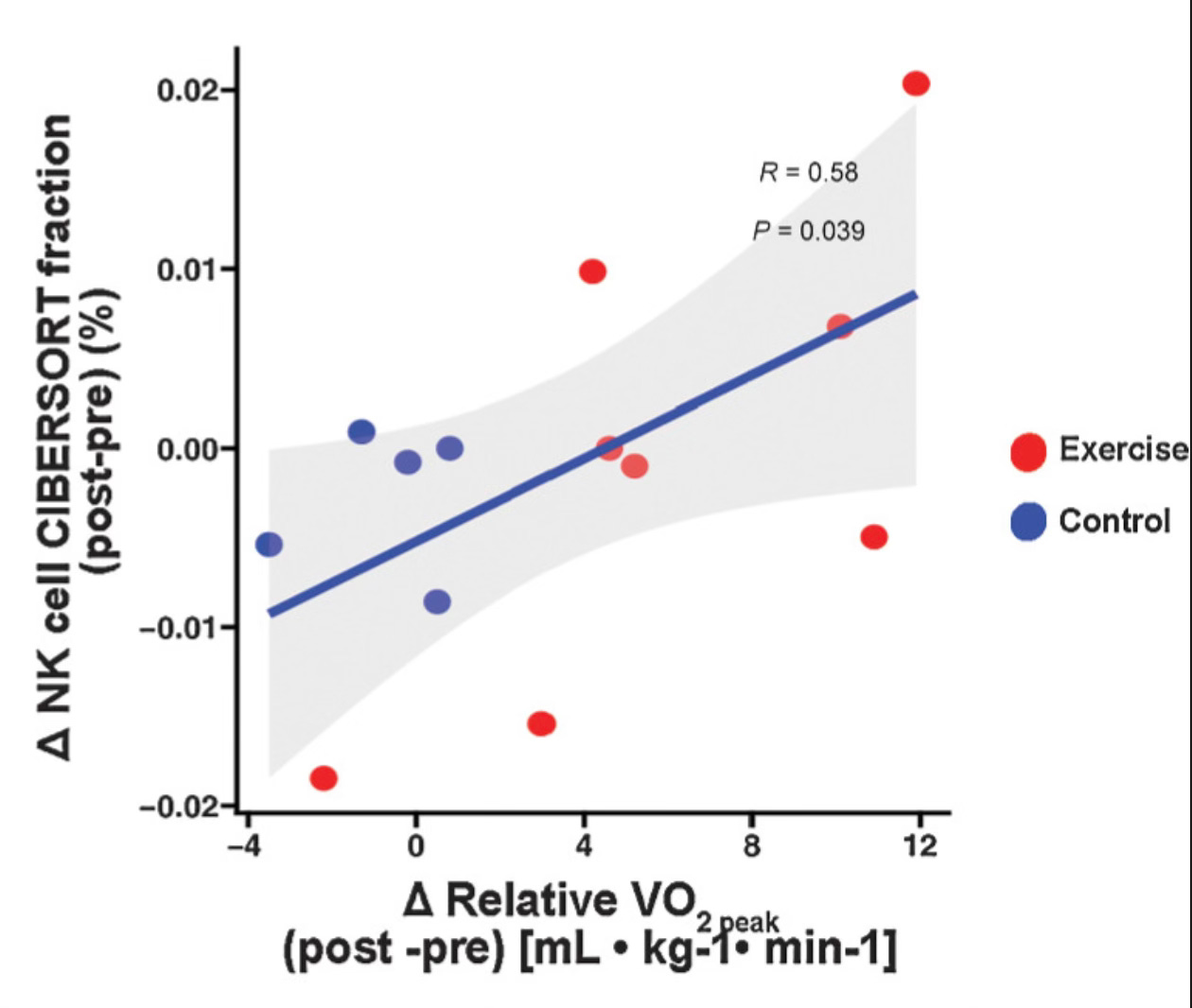Why exercise is one of the best tools we have for cancer prevention.
Let’s start with the simple fact that a lot of cancer diagnoses are simply down to ‘bad luck’.
You can do everything right and still get cancer.
This is a somewhat depressing fact, given its leading position as a cause of death.
The other leading cause of death, cardiovascular disease, is mostly preventable.
Cancer – Less so.
But that does not mean you cannot tilt the odds in your favour.
And regular exercise, it seems, might be a good way of doing so.
Regular exercise and high levels of physical fitness have been consistently associated with longer lifespans and a substantially reduced risk of dying from any cause¹.
 |
If exercise reduces all-cause mortality, it seems safe to say that it is reducing cardiovascular and cancer deaths.
Share
Let’s look at cancer specifically.
Over a 10-year period, those in the highest fitness levels had an 11% reduction in the risk of cancer².
But this 11% figure masks the fact that not all cancers are impacted equally.
Exercise has little effect on some cancers, while it has a much bigger effect on others.
While the risk of gastric/stomach cancer is reduced by only about 5%, the reductions in other cancer types are even greater.
- Breast Cancer – 13% Reduction
- Oesophageal Cancer – 18% Reduction
- Liver Cancer – 18% Reduction
- Lung Cancer – 25% Reduction
- Colorectal Cancer – 26% Reduction
The impact of exercise on cancer even extends beyond the original diagnosis and has been shown to reduce the likelihood of recurrence of cancer³.
Regular exercise in those who have already been diagnosed with cancer has been associated with:
- A reduced chance of dying from a breast cancer diagnosis by 40% compared to those with breast cancer who did not exercise regularly⁴.
- A reduced risk of death from colorectal cancer by 30%⁵.
The question is WHY exercise might be associated with such benefits with respect to cancer.
Regular exercise and high fitness levels are associated with lower rates of obesity.
Obesity is the second leading cause of preventable cancers after smoking⁶.
Please reread that line again.
It should hit you like a ton of bricks. If it doesn’t, you are not getting the magnitude of the problem that is preventable.
The likely driver of the cancer risk conferred by obesity is probably related to higher levels of insulin resistance and metabolic syndrome.
A diagnosis of metabolic syndrome significantly increases your risk of several leading cancers⁷:
- Postmenopausal Breast Cancer – 52% Increased Risk
- Hepatocellular Cancer – 81% Increased Risk
- Colorectal Cancer – 30-40% Increased Risk
- Pancreatic Cancer – 55% Increased Risk
But insulin resistance and metabolic syndrome are not the only drivers of risk.
Cancer As A Breakdown Of Immune Function
The hallmark of cancer is the uncontrolled replication of cells.
But the cells in your body are continually replicating.
The mechanisms of replication usually do an excellent job at producing exact copies of cells, but sometimes replication errors occur, which can lead to the development of cancer⁸.
The immune system’s job is to constantly search for these poorly replicated cells and destroy them.
In truth, we are probably creating very early cancerous cells throughout our lives, but because of our immune system, they do not get the opportunity to progress into fully formed cancers.
Natural Killer Cells are one of the key agents for targeting abnormal precancerous cells.
A properly functioning immune system then is essential for cancer protection.
Hereditary Cancers and The Role Of The Immune System
Lynch syndrome is a genetic colorectal cancer disorder where 60% of carriers go on to develop colorectal cancer over their lifetime⁹.
A recent study examined the question of whether regular exercise in such a high-risk group for cancer would impact the number of natural killer cells, which are important tools for destroying early cancer cells.
Those who did 45 minutes of high-intensity exercise three times per week for a year had significantly higher levels of natural killer cells¹⁰.
 |
The higher levels of natural killer cells are likely to explain at least some of the protection regular exercise confers when it comes to cancer prevention.
Regular exercise also influences a variety of other cellular mechanisms that modulate cancer risk, including beneficial changes in¹¹:
- Cell Growth Regulators – IGF1 & IGFBP3.
- Suppression of RAS oncogenes.
- Higher levels of proteins involved in cellular repair.
- Enhanced activity of regulators of apoptosis and cellular growth.
Tilting Odds
The best way of not dying from cancer is to not get cancer.
Unfortunately, much of that risk is simply down to ‘Bad Luck’.
However, it is clear that regular exercise can play a crucial role in decreasing the odds of developing cancer, and the mechanisms by which it does so are becoming increasingly clear.
We need all the help we can get.
Keep the odds on your side.
1
Cardiorespiratory Fitness and Mortality Risk Across the Spectra of Age, Race, and Sex. J Am Coll Cardiol. 2022 Aug 9;80(6):598-609.
2
Association between physical activity and cancer risk among Chinese adults: a 10-year prospective study. Int J Behav Nutr Phys Act 19, 150 (2022).
3
Physical Activity Reduces the Risk of Recurrence and Mortality in Cancer Patients. Exerc Sport Sci Rev. 2020 Apr;48(2):67-73.
4
Physical activity in breast cancer survivors: A systematic review and meta-analysis on overall and breast cancer survival. Breast 2019; 44:144-152.
5
American College of Sports Medicine Roundtable Report on physical activity, sedentary behavior, and cancer prevention and control. Medicine and Science in Sports and Exercise 2019; 51(11):2391-2402
6
Cancer is a Preventable Disease that Requires Major Lifestyle Changes . Pharmaceutical Research, Vol. 25, No. 9, September 2008
7
Mendonça FM, et al, Metabolic syndrome and risk of cancer: Which link? Metabolism (2014),
8
Roles of the immune system in cancer: from tumor initiation to metastatic progression. Genes Dev. 2018 Oct 1;32(19-20):1267-1284.
9
Cancer risks by gene, age, and gender in 6350 carriers of pathogenic mismatch repair variants: findings from the Prospective Lynch Syndrome Database. Genet Med. 2020 Jan;22(1):15-25.
10
Exercise Training Reduces the Inflammatory Response and Promotes Intestinal Mucosa-Associated Immunity in Lynch Syndrome. Clin Cancer Res 1 November 2023; 29 (21): 4361–4372.
11
Why exercise has a crucial role in cancer prevention, risk reduction and improved outcomes, British Medical Bulletin, Volume 139, Issue 1, September 2021, Pages 100–119,
If you liked this post please consider sharing it?
Share Dr Paddy Barrett
As with all the material on this site it is not medical advice and is for general informational purposes only. None of the information provided constitutes the practice of medicine, or any professional healthcare services. No doctor patient relationship has been formed. Information contained on this platform is used at the readers own risk. Readers of this information should not delay or disregard in obtaining professional medical advice or treatment for any health related issue. The information presented is in no way a substitute for medical advice.
© 2023 Paddy Barrett
My Heart Health, Suite 3 Blackrock Clinic, Blackrock, Co Dublin, Ireland.
My comment: There is new research indicating that mitochondrial function greatly improves with exercise. It reduces the potential for DNA changes that can lead to cancer and in cellular degeneration. I didn’t write a specific blog about this as the scientific detail is overwhelming to me and I already keenly advocate exercise across all ages.


